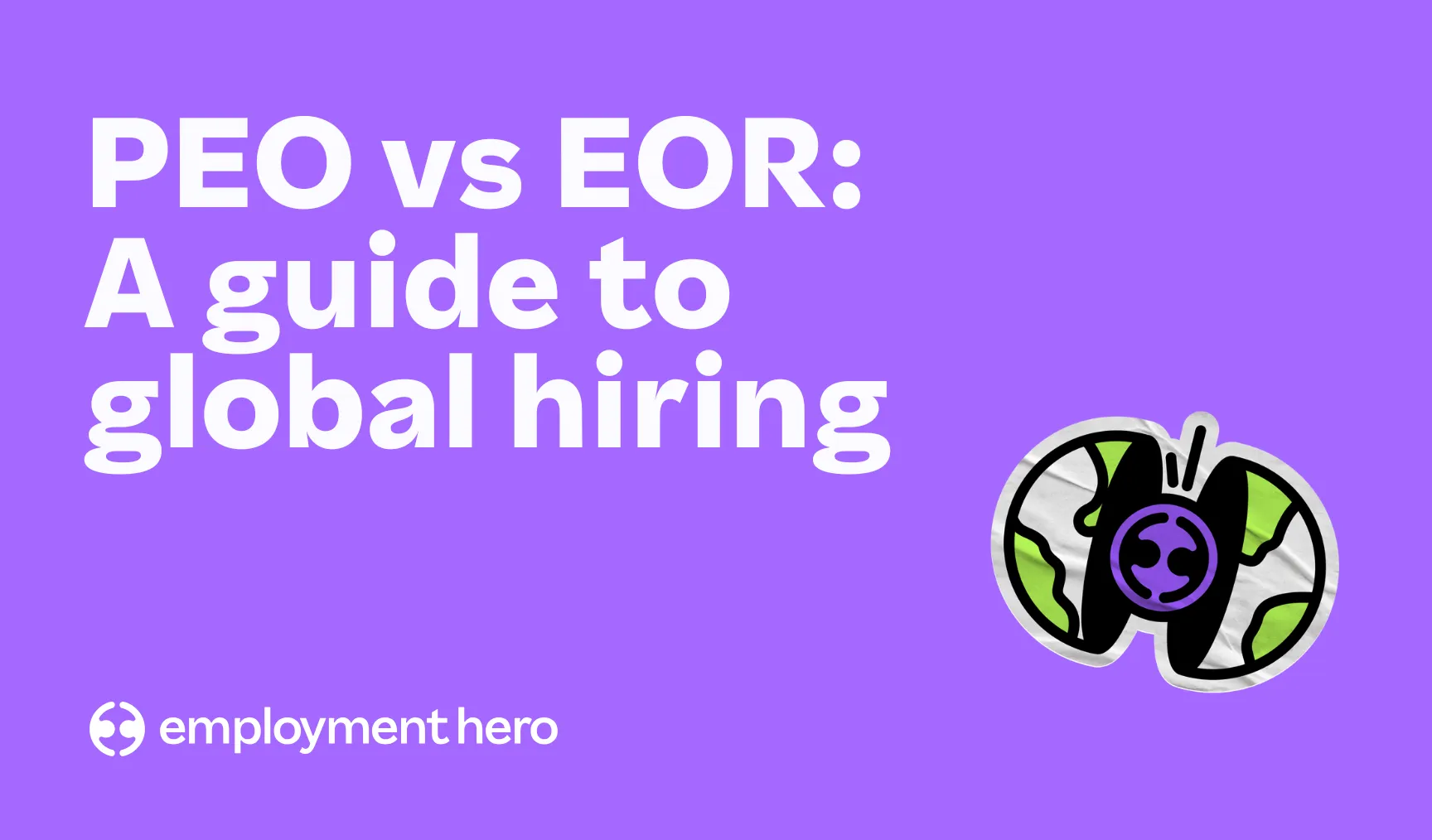Leave Management: What Is It and How It Works
Let’s explore the importance of an effective employee leave management policy, and how it can be easier to achieve than you think.

We often hear about HR departments being under the pump. With HR professionals juggling lots of different tasks – sometimes including payroll – it can be hard to find the time and resources to deal with leave management.
Employee leave management seems like another “to-do” on the ever growing list, but the reality is, it is one of the keys to a successful business and happy employees.
Your employees need to recharge and give time to their lives outside of work. Work-life balance makes a happy team and a well-run business, so you need to encourage employees to request leave now and then.
Let’s explore the importance of an effective employee leave management process and how it can be easier to achieve than you think.
What is leave management?
Employee leave management is the process of managing requests for time off work. The process helps to handle any time off, including holidays, sick leave, andparental leave.
A successful time off process will provide a fair and accurate way to manage requests to ensure that both the employee and company needs are met.
Pro tip: For an effective leave management process to happen, you should have an employee leave policy in place.
Who is responsible for leave management?
HR managers are responsible for the facilitation of time-off requests for time off. Whilst HR handles these requests, it is department leads who are responsible for approving time off for their team. A clear time off process makes the job of HR professionals easier while ensuring both the business and staff needs are catered for.
What are the benefits of having proper time off processes?
Employee time off and proper workforce management are vital elements to ensuring your business is successful, and your teams work to their optimal capacity.
Leave management is important as it:
- Increases employee satisfaction and retention levels
- Allows for consistency across the business for annual leave, sick leave, etc.
- Ensures compliance in leave policies
- Reduces HR errors in attendance tracking
- Increases productivity and efficiency
Paid time off (PTO) is an important benefit for staff and has a direct correlation with attracting and retaining talent. A quality time-off management process allows for consistency and fairness across the business, resulting in HR efficiency due to fewer errors in communication or documentation.
Management also sees benefits as they can effectively plan workloads around employee absence.
What happens if you don’t oversee leave requests effectively?
The benefits of time off processing are clear, but to help illustrate why it is so important to have effective policies, let’s consider some scenarios in workforce management that you’ll want to avoid but probably won’t without a clear leave management process in place.
Being understaffed
Why is half of your team missing on the day you need to hit that deadline?
A proper process allows you to work time off around project deadlines so you’ll always have enough staff to cover the workload.
Incorrect understanding of time-off requests
You are asking for trouble if you approve an annual leave request without the proper visibility of other requests, both approved and pending.
It’s easy to say yes to people when they ask, but this can come back to bite you later when you realise you forgot about your other approvals.
Evaluating same-day requests
How do you fairly compare identical time-off requests?
Generally, you can only allow one employee per team off on a particular day , and without access to information about time off history, you might refuse a valid request and risk creating a bigger issue.
Incorrect calculation of leave
There is nothing worse than discrepancies in anemployee’s payroll, especially when you can’t prove the correct answer.
From the incorrect calculation of paid leave hours to inaccurate recording of who took which day off and when this can become messy and unfair when you have no proper method for recording leave requests.
The last thing you want is to give an employee too much or too little time off.
Best practices for time off
The best employee leave processes start by taking into account employment laws.. It is no surprise that your policies must comply with the law, but this can also help to provide a framework for where to begin.
Be consistent when enforcing leave management policies
Ensure leave management policies are applied consistently toavoid discrimination of employees and allow enough room to move to take into account personal circumstances, as these will always vary.
When managing employee time off requests, there needs to be a balance, as there is a thin line between being considerate andlegally fair across the board for all managers and staff.
Clearly communicate policies
Ensure your leave management policies are written clearly, so all employees understand what to expect, and include:
- A detail of the different types of time off
- The holidays that will be observed
- How time is accrued/what to do with unused leave
- The procedure for requesting time off
- The types of time off offered
Take into account your company benefits package and communicate your workplace policies clearly via an employee manual. You want to ensure that employees are aware of their rights and benefits and can refer back to a document that clarifies your processes and procedures if need be.
Supercharge your leave management with Employment Hero
Workforce management can be time consuming for HR managers, and business owners. Tasks such as this can often take professionals away from focusing on other, more value driven responsibilities. But what if we told you it didn’t have to be this way?
Employment Hero is the world’s first Employment OS (operating system) that offers everything your business needs, from finding and hiring top talent using SmartMatch to seamlessly onboarding new hires, automating complex payroll, and driving employee engagement and morale, all backed by UK-based expert support.
One system, everything employment.
To learn more, get in touch with one of our specialists today.
Related Resources
-
 Read more: Setting employee expectations: Your guide to getting it right
Read more: Setting employee expectations: Your guide to getting it rightSetting employee expectations: Your guide to getting it right
Learn how to set clear employee expectations to boost productivity and engagement. Discover actionable tips and strategies for leadership success.
-
 Read more: PEO vs. EOR: A guide to global hiring
Read more: PEO vs. EOR: A guide to global hiringPEO vs. EOR: A guide to global hiring
Contents Expanding your business into new markets is a powerful growth strategy. But hiring talent globally introduces a maze of…
-
 Read more: How to build a global team without a local entity
Read more: How to build a global team without a local entityHow to build a global team without a local entity
Learn how to streamline your hiring and expand your UK business globally with an Employer of Record (EOR) without the…





















